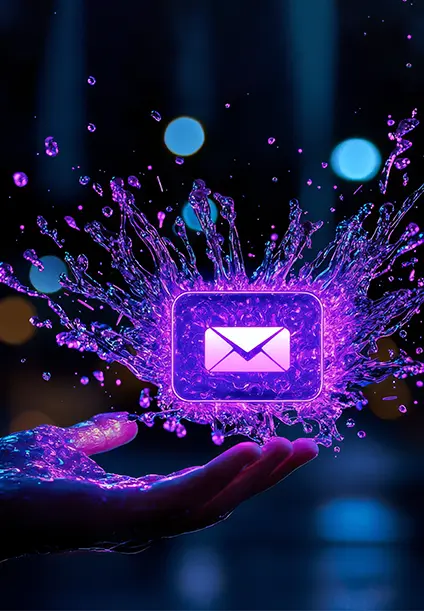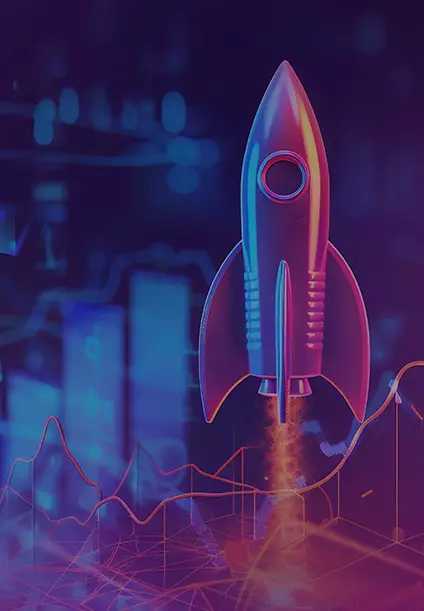Rethinking public sector support in the Middle East with AI-driven contact centers
July 25, 2025
Imagine: A citizen waits on hold for over an hour just to inquire about a form. Their frustration grows, not just from the delay itself, but from the lack of alternatives. After waiting, they are disconnected, only to begin the process again.
This is a familiar scenario for many in public sector contact center management. But it doesn’t have to be.
Public sector services are critical yet often inaccessible or delayed. As populations grow and expectations rise, the gap between service demand and delivery widens. According to the 2022 Arab Barometer survey, 58.7% of citizens expressed that they were dissatisfied with their government’s performance, and only 12.2% reported satisfaction.
Public sector organizations are now under pressure to move beyond traditional call centers towards smarter, more efficient contact centers, not just to meet expectations but to restore trust.
But what exactly does a modern contact center look like?
In this blog we will explore the challenges facing public sector contact centers in the Middle East and how modernization can solve them, and what it takes to build systems that are fast and omnichannel.
Stumbling blocks
In the public sector, customers don’t really have a choice when it comes to obtaining services. Whether it's renewing an Emirates ID, paying utility bills, scheduling a medical appointment, or appealing a traffic fine, they can’t go to a competitor if one is not performing well, so the public sector has an even greater responsibility than does the private sector to provide a great experience for their customers.
Unlike private enterprises, public sector contact centers are tasked with serving every citizen, no matter the language, literacy levels, or regions. A local public institution may be grappling with a surge in citizen inquiries while navigating tight budget constraints. Long wait times, incomplete information, and frustrated agents and customers have all become common.
McKinsey’s 2022 public sector survey reveals a sobering truth: 80% of major government digital initiatives fail to meet their objectives. Reasons range from unclear strategies to a lack of digital skills or poor change management.
However, the primary challenge facing the public sector today is not having an omnichannel contact center solution, which makes it hard to deliver fast, empathetic, and flexible service, causing a ripple effect.
1. Siloed systems
Siloed systems and outdated tech make it hard for public sector agents to stay aligned, leading to more work and slower service. What is needed? A centralized solution that gives teams a unified view, cuts call time, and helps resolve issues faster, for both agents and customers.
2. Lack of accessibility
Lack of accessibility is a real challenge for public agencies serving diverse communities. Without language support, many citizens struggle to access services or understand key information. This also puts extra pressure on already stretched teams.
Modern contact center solutions solve this with built-in translation and multilingual chatbots, making inclusive service possible without added strain.
3. Limited data
Public agencies need real-time data to make smart, timely decisions. But without a full picture of citizen interactions, it’s tough to spot patterns, understand citizen sentiment, or improve services in the right direction.
The imperative for modernisation in the Middle East’s public sector
Repeating what we discussed earlier: while there may not be direct competition in the public sector, the region's market demands high customer service standards. As a result, public sector agencies now face an urgent need to modernise their customer experience (CX) strategies. They can’t simply copy private sector approaches; they need to build citizen-first, scalable systems, starting with the modernisation of their contact centers.
AI-powered customer service is one of the biggest game-changers in business.
Why does it matter? Just look at the numbers.
According to Fortune Business Insights, the Middle East contact center market was valued at USD 420.9M in 2024 and is expected to reach USD 1.1B by 2032 exhibiting a CAGR of 12.9% during the forecast period. The UAE market is witnessing robust growth driven by the adoption of cloud-based communication solutions, AI chatbots, real-time analytics, and omnichannel support.
As the 4th industrial revolution gains momentum, public and private sectors across the Middle East are waking up to the global shift toward AI and advanced tech. The choice is clear: get on board or risk falling behind. And with so much at stake, staying behind isn’t really an option. PWC estimates that by 2030, the Middle East could gain 2% of the total global AI benefits, which comes to around USD 320 billion.
Today, modernization is not a choice, but an imperative. Without transforming the very channels through which citizens engage with public services, broader digital mandates risk falling short of their potential. Contact center transformation must be viewed as foundational infrastructure; essential for meeting goals and rebuilding public trust in the services that matter most.
Bringing the power of AI to the contact center with Microsoft
Imagine a new scenario: Abdullah, a concerned citizen, calls his local health department to ask about vaccination requirements for his elderly parents. Instead of being put on hold or transferred from one department to another, he’s instantly connected to an AI-powered virtual agent. It understands his question and provides clear, accurate information in the language he’s most comfortable with.
The interaction is swift, accurate, and most importantly, tailored to Abdullah’s needs. The days of long hold times and vague answers are replaced by a seamless, satisfying experience.
Public sector teams benefit too. With routine queries handled by AI, agents have more time to focus on complex cases. This leads to faster responses, smarter resource use, and less pressure on already limited budgets. In public health, where timely information can make all the difference, this kind of system can have a real impact.
This kind of future is possible with Microsoft Dynamics 365 Contact Center, agencies can bring intelligence, automation, and efficiency to every interaction using a Copilot-first approach that works with the CRM they already have.
One example is our work with Parkin (PJSC), Dubai’s largest public parking provider. What was once a multi-step customer journey is now simplified through an AI assistant available via WhatsApp, web, or social channels. Built on Microsoft’s technology stack, including Dynamics 365, Azure OpenAI, and Copilot, the solution delivers multilingual, scalable, and truly citizen-first service.
For the public sector, the benefits go beyond efficiency. AI handles routine queries, freeing agents to focus on complex issues. Built-in translation and sentiment analysis improve accessibility and engagement across diverse communities. And with full support for omnichannel communication, agencies can meet citizens where they are, while keeping data secure and fully compliant with regional laws.
The path ahead
The future of citizen services depends on how well we use AI, cloud, and data to improve everyday interactions. But the tools alone won’t get you there. Without the right partner to guide implementation, even the most powerful platforms can fall short. That’s where we come in. As a trusted Microsoft partner with proven experience in the region, Systems Limited Middle East & Africa can help public sector teams modernize with purpose and clarity.
Let’s talk about how our AI-powered digital contact center solution can improve CX and EX.
Learn more about our solution, ContactSense - An intelligent contact center built with Microsoft Dynamics 365, OpenAI, and automation at its core, designed to deliver faster, more personal support across every channel.
Quick Link
You may like
Systems Limited announces investment in Salesflo to take on Pakistan’s digital retail market
READ MORE
Read our recent articles
How can we help you?
Are you ready to push boundaries and explore new frontiers of innovation?


